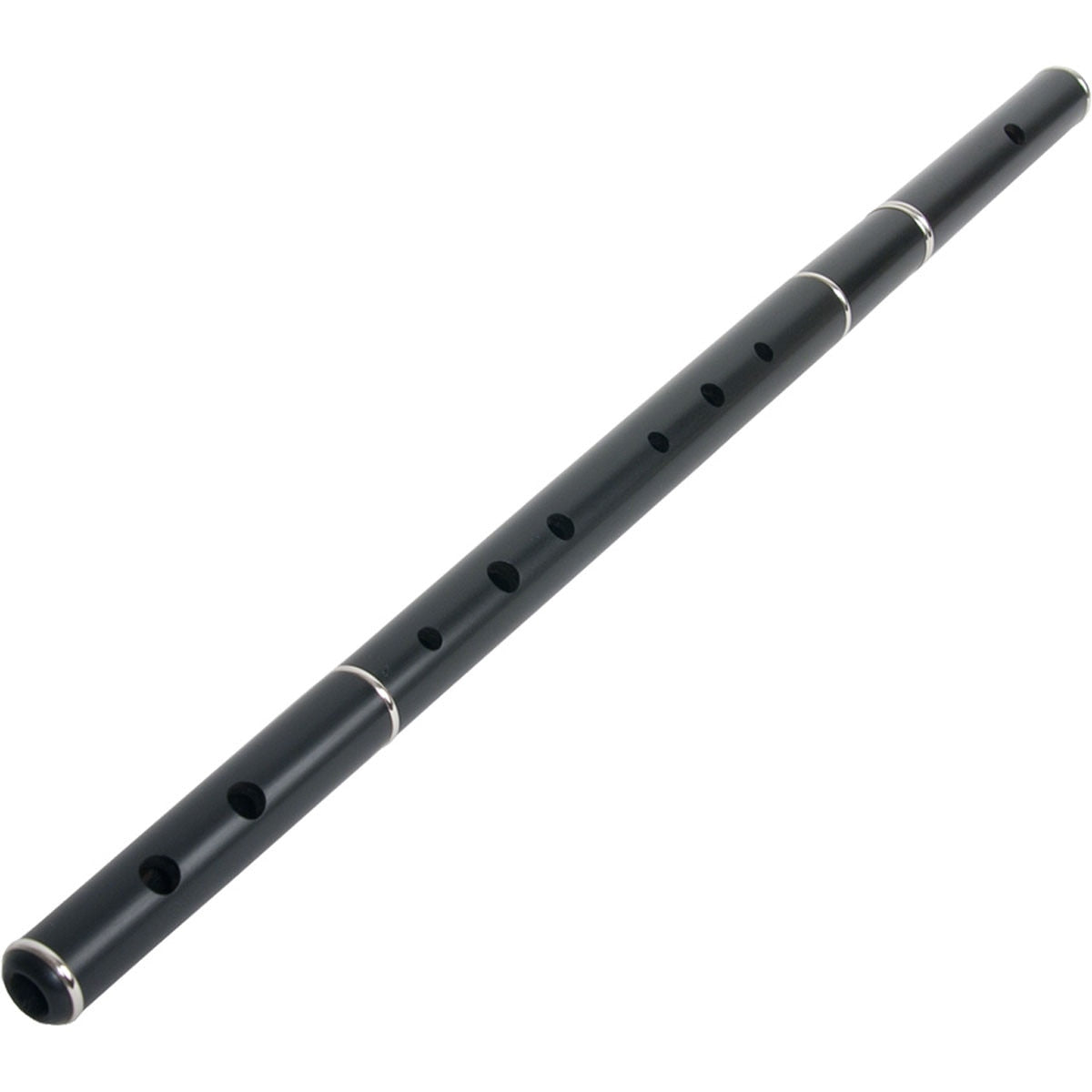Description
- This flute is in the key of D and is tuned to the traditional Irish scale. The F# is flat, the A is sharp, the C# is flat, and the bottom D is also quite flat. We designate this tuning as “Traditional” tuning. If you are seeking a flute with standard tuning, please look for flutes labelled “Standard” tuning. No adjectives are necessary; this is an ebony flute. It assembles in four parts and comes in a padded gig bag. At this price, you can afford to purchase the best. The upper two sections have a brass slide for additional tuning. The centre section slides into the top and bottom sections and has taped and threaded ends for a secure fit. This flute is tunable. The assembled flute is 26 inches closed; the slide opens the flute to a 28.25-inch length.
- This flute does not sound as intended.
- If you use fingering similar to a whistle, you will notice that some notes of your Irish Flute sound “off.” The traditional Irish flute is intentionally tuned slightly flat. The F# is flat, the A is sharp, the C# is flat, and the bottom D is flat. Flautists believe that these “off” notes were introduced to the flute in the early 19th century. Explanations for this include: flutes were not originally played with “whistle” fingering; the “off” notes are a result of a 3-octave tempered scale; the “off” notes compensated for the flautist Charles Nicholson’s method of blowing the bottom notes (G-D) more strongly than the A; and that the A and C# need to be slightly “off” in order to produce a good cross-fingered C-natural. Regardless of the reason, the traditional tuning for the Irish Flute is slightly flat.
- Tuning a Flute with the Slide and Embouchure
- Until you can produce strong, resonant notes across the lower and upper octaves, fret not about tuning. When you are prepared, commence by positioning the tuning slide to produce a robust, full G at the correct pitch. Beginners often exert excessive force on the second octave, resulting in a sharp sound. In contrast, with the flute, adjusting your embouchure is the primary method. Slightly tilting your head up or down, or rolling the flute towards or away from you, can produce the desired effect. Blowing down into the hole flattens notes, while blowing across the hole sharpens them. As your lip muscles strengthen and your embouchure tightens, your tuning will naturally improve.
Adjusting the Head End Cork
- If the head end cork shifts, your flute will become out of tune with itself (i.e., low notes not in harmony with high notes). In such a situation, utilize a 1/2-5/8” dowel to apply steady, gentle pressure and move the cork. Ensure that the barrel section remains over the tuning slide to avoid damaging it. The cork is in the correct position when you can play both low B and high B in tune with each other.


